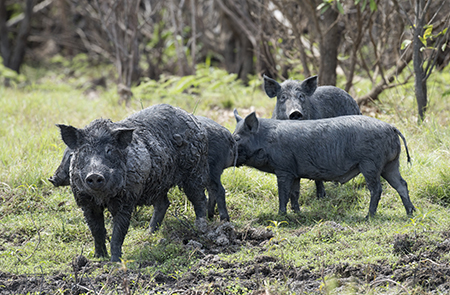What to do about feral pigs
13 May 2022
SMALL FARMS - MAY 2022 - PESTS & WEEDS
By Claire Hockley
Biosecurity Officer
M: 0419 839 049 | E: claire.hockley@lls.nsw.gov.au

Feral pigs are highly destructive and can cause significant damage to infrastructure, prey on native wildlife, damage wetlands, foul water, spread weeds and damage pastures & crops. They also carry exotic diseases that can infect both livestock and humans.
So, how can you tell if you have feral pigs on your land? Signs of feral pig activity to look out for include: the uprooting of soil, fence damage, tracks, faeces, wallows near dams and rub marks on trees.
There are several ways you can control feral pigs and help reduce their impact on your land, the environment and agricultural production. Poisoning, trapping and shooting are all effective options but do depend on the location, the number of pigs and your experience.
Poisoning with 1080 is a very effective and common method of controlling feral pigs. However, there are strict legal restrictions on the use of 1080 poison, including distance restrictions, which means it cannot be used close to town.
Another option is HOGGONE ®, a fast-acting sodium nitrite pig bait. Although there are still distance restrictions landholders must follow, HOGGONE® is generally safer to use than 1080 as the risk to non-target animals is lower.
Pig traps are a good option in areas where poison is not suitable for use, and Local Land Services do have pig traps for landholders to hire. Other means of control include electric fencing to protect certain areas and shooting if you only have a small number of feral pigs.
A coordinated feral pig control program is always more effective and successful, so chat to your neighbours and work together.
If you have feral pigs on your property, please call your local Biosecurity Officer on 1300 795 299 to chat about the best control option for your property and location.